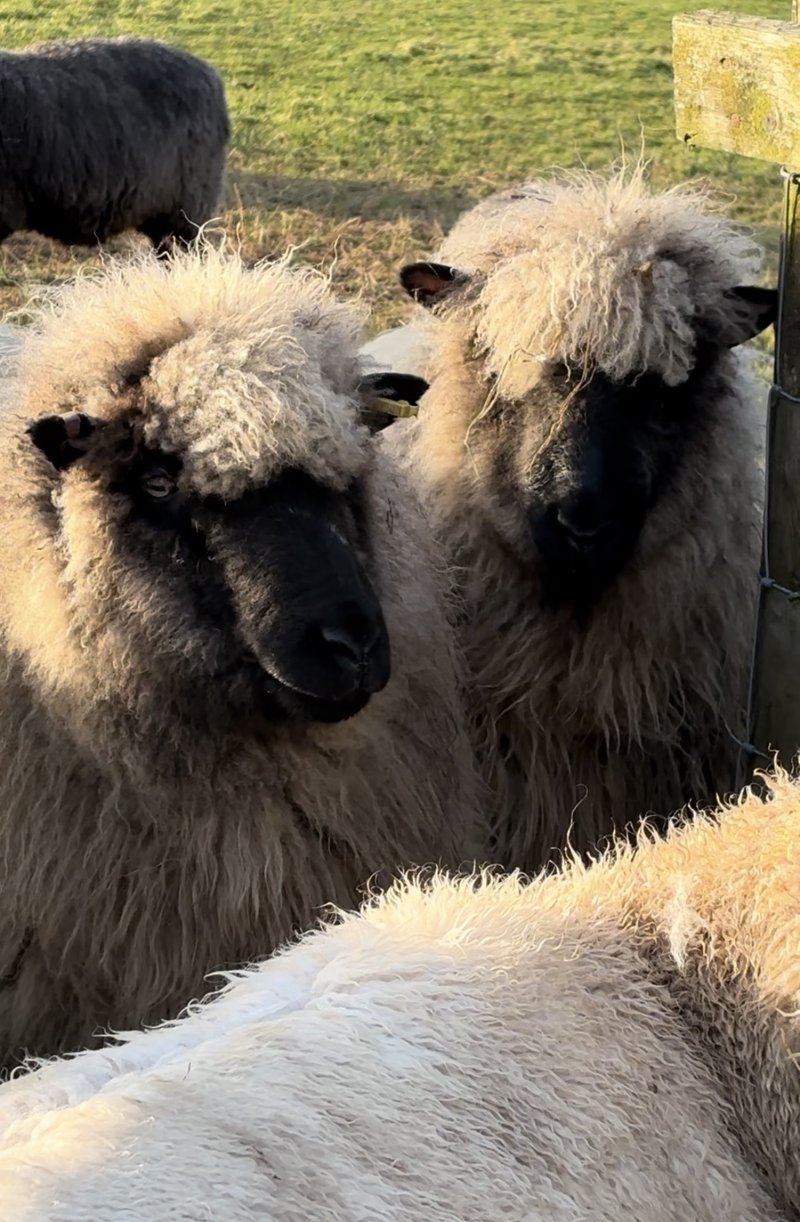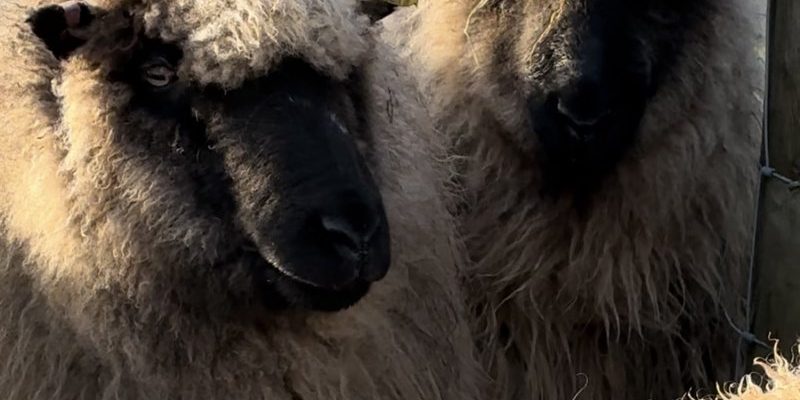
Let’s dive into the world of sheep and separate fact from fiction. Imagine you and I are sitting down with a cozy cup of coffee, chatting about these charming animals and busting some myths that might surprise you. Whether you’re a farmer, a nature lover, or just curious about sheep, this conversation will enlighten you on what these animals really are.
1. Sheep Are Just Dumb Animals
This is a biggie. Many people think sheep are dumb, wandering around aimlessly, following each other without a second thought. But here’s the thing: sheep are actually quite intelligent! They have remarkable memories and can recognize faces, not just of other sheep but also humans. They can remember about 50 different individuals for up to two years!
Think of a sheep like a friend who always recognizes you, even if you’ve changed your hairstyle. Their social structure is fascinating, too. They form strong bonds with their flock, often developing friendships, and they communicate through a variety of vocalizations. So, while they may seem simple, they’re actually social and emotional beings navigating life with surprising smarts.
Remembering and Learning
Sheep are also quick learners. If one sheep learns how to navigate a fence or find the best grazing spots, others will often follow suit. It’s like watching a group of friends learn a new game together. If one person figures it out, chances are the rest will catch on pretty quickly. This ability to learn from one another is a crucial survival skill in the wild, proving they are far from mindless followers.
2. All Sheep Are White
When you picture sheep, the classic fluffy white sheep is likely what comes to mind. But did you know that sheep come in various colors? Black, brown, gray, and spotted sheep are just as common and can be just as charming. Breeds like the Jacob sheep have unique patterns, giving them a striking appearance.
Imagine a colorful quilt—each sheep adds a different patch to the tapestry of agriculture. These variations aren’t just for looks; the color of a sheep’s wool can serve several purposes, such as camouflaging them in certain environments or providing unique attributes to their fleece.
Breeds and Their Colors
There are hundreds of different sheep breeds around the world, each with its own distinct characteristics. Here are a few examples:
- Dorset: Typically white, known for their excellent mothering skills.
- Hampshire: A breed with dark faces and legs, recognized for their meat production.
- Jacob: A breed with unique black and white patterns, known for their hardiness.
These variations remind us that sheep are just as diverse as any other domesticated animal.
3. Sheep Only Eat Grass
You might picture sheep munching on green grass all day, but their diet is more diverse than that. While grass is a staple, sheep enjoy an array of vegetation, including plants, shrubs, and even flowers. They’re like picky eaters who still have a refined palate!
Imagine grazing sheep as nature’s lawnmowers, keeping grass in check while simultaneously foraging for other tasty plants. This helps maintain healthy ecosystems, as they contribute to plant diversity. A balanced diet is essential for their health, providing the necessary nutrients for lively growth and wool production.
Grazing Habits
Sheep are also particular about their grazing habits. They’ll often pick out their favorite plants and can be selective about what they eat. If given a chance, they might opt for clover over plain grass, showcasing their unique tastes. This behavior is vital for the environment, as it encourages the growth of various plant species instead of letting one type dominate.
4. Sheep Are Noisy
While it’s true that sheep communicate through vocalizations, calling them noisy can be misleading. Their vocal sounds, often described as bleats, serve various purposes. They express everything from distress to contentment, much like how you might laugh or cry to convey your feelings.
Think about how you use your voice: sometimes it’s loud and boisterous; other times, it’s soft and soothing. Sheep use their vocalizations to communicate with each other across distances, which is vital for their flocking behavior. So, while they may sound vocal, they’re not just making noise; they’re having conversations!
Understanding Sheep Vocalizations
Each bleat can have a different meaning—some might signal hunger, while others might indicate that a lamb is separated from its mother. If you’ve ever had to shout across a crowded room to find a friend, you can appreciate the importance of clear communication!
5. Sheep Are Lazy Animals
The idea that sheep are lazy is pretty far from the truth. While they do enjoy lounging around in sunny spots, sheep are quite active animals. They are curious and will spend hours grazing and exploring their surroundings. Being in a herd, they often engage in playful behavior, bounding around as they enjoy their time together.
Think of them as your friends who love to hang out but also enjoy a good hike on the weekends. Their natural instincts lead them to wander and explore, which keeps them physically fit and mentally stimulated.
Daily Activities
During the day, sheep will graze, socialize, and move around to find the best spots for feeding. Their activity levels change with the seasons; they may be more active when the weather is pleasant. It’s fascinating to realize how much social engagement they have, sometimes playing with one another or running around in short bursts.
In this sense, sheep aren’t lazy—they’re simply following their natural rhythms while mingling with their friends.
6. Sheep Don’t Need Care
Some people believe that sheep are low-maintenance animals that can survive on their own. However, they require proper care to thrive. Shearing, feeding, and health checks are all essential parts of sheep husbandry. Just like you wouldn’t neglect your pet dog, sheep need regular attention and care to stay healthy.
Imagine having a garden; if you want it to flourish, you have to tend to it, watering it regularly, pulling weeds, and ensuring the plants are healthy. The same goes for sheep.
The Role of Shepherds
A shepherd plays an important role in a sheep’s life. They monitor the flock, ensuring each sheep is healthy and safe from predators. They also help rotate pastures to avoid overgrazing, ensuring the land remains productive. Like a good gardener, a shepherd nurtures the flock and promotes their overall well-being.
7. Sheep Can Only Survive in Farms
While many sheep are raised on farms, the idea that they can only thrive in agricultural settings is a misconception. Sheep have natural instincts and abilities that allow them to adapt to various environments. They can be found in both wild and domestic settings, showing their resilience as a species.
Think of these animals as adaptable travelers—they can adjust to new situations, whether it’s a grassy pasture or a rocky hillside. This flexibility has allowed them to thrive worldwide, from the mountains of Peru to the rolling hills of Scotland.
Wild Sheep
There are also wild relatives of domestic sheep, like the bighorn sheep and the mouflon. These animals thrive in rugged terrains and demonstrate the adaptability that sheep possess. Their ability to survive in the wild speaks volumes about the innate skills they have—even if they’re often overshadowed by their domesticated cousins.
In conclusion, sheep are fascinating animals full of surprises, busting myths and misconceptions along the way. They’re not mindless followers or lazy grazers; instead, they are intelligent, social, and adaptable creatures that deserve our respect and care. Next time you see a sheep, I hope you’ll think of them as more than just fluffy animals—they’re part of a rich tapestry of life, playing their roles in environments far and wide.

